News
Parliament to convene on 21st and 22nd next week
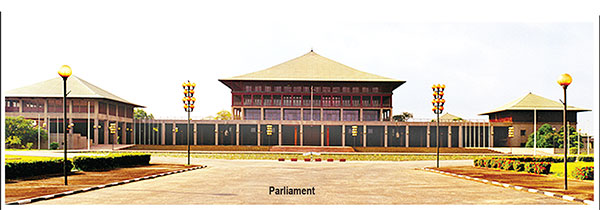
* Adjournment Debate on COPE Reports on October 22
* Adjournment Debate on Fertiliser on October 21
Parliament would convene on Thursday the 21st and Friday the 22nd next week, House Secretary General Dhammika Dasanayake said.
The decision was taken at the meeting of the Committee on Parliamentary Business chaired by Speaker Mahinda Yapa Abeywardena on 7th Octobner.
Accordingly, on both sitting days from 10.00 am to 11.00 am, time has been set aside for Questions for Oral Answers.
Parliament would convene on October 21 at 10.00 am and from 11.00 am to 3.00 pm the Code of Criminal Procedure (Amendment) Bill, Regulations under the Civil Procedure Code, Youthful Offenders (Training Schools) (Amendment) Bill and the Penal Code (Amendment) Bill would be debated, the Secretary General said.
Thereafter from 3.00 pm to 6.00 pm, the Adjournment Debate on current issues with regard to the fertiliser controversy in the country will be held as per a motion moved by the Opposition.
Two orders under the Strategic Development Projects Act will be debated on Friday, October 22 from 11.00 am to 12.00 noon.
Subsequently, the Adjournment Motion moved by the government on the COPE Reports presented to Parliament on 10.03.2021 and 06.04.2021 will be taken up for debate from 12.00 noon to 5.30 pm without a lunch break.
Meanwhile, the proposed amendments to the Standing Orders to be made by the Committee on Standing Orders were tabled for the information of the Members of the Committee on Parliamentary Business and it was agreed to discuss it in future.
The Committee also emphasised the need to conclude the Question for Oral Answers at 11.00 am and the time allotted for Questions under Standing Order 27 (2) at 11.15 am.
The Committee also discussed the possibility of opening the Public Gallery in Parliament and it was decided to consider the re-opening of the Public Gallery in future, subject to health guidelines.
News
12,140 Lankans killed in road accidents during past five years
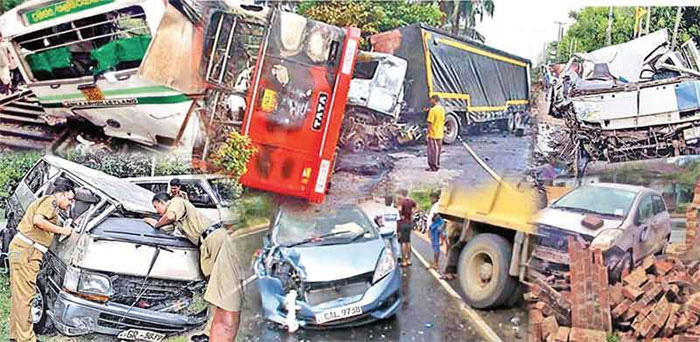
By Hemanta Randunu
Police Headquarters have revealed that 12,140 individuals have lost their lives in traffic accidents across the country over the past five years. During this period, a total of 117,970 vehicle accidents occurred, including 11,581 fatal ones, according to the Police Headquarters’ Motor Traffic Division.
The shocking data was uncovered through a review conducted under the supervision of the Acting Inspector General of Police, Priyantha Weerasuriya, and with the help of Deputy Inspector General of Police Indika Hapugoda and Senior Police Officer Manoj Ranagala from the Motor Traffic Division.
The Police Motor Traffic Division attributes the rapid increase in vehicle accidents to a variety of factors, including non-compliance with traffic laws, drunk driving, speeding, reckless driving, and inexperienced drivers.
The number of accidents involving buses has been increasing rapidly on an annual basis, according to the police. As a result, the police are intensifying legal action against errant drivers.
In response, plainclothes police officers are deployed in buses to identify and take action against drivers who commit traffic violations.
Vehicle owners have been informed to comply with a directive to remove these unnecessary accessories from their vehicles.
News
Narcotics with a street value of Rs 28.1 bn seized by SLN in 2024

The Navy took into custody narcotics with a street value of Rs 28.1 billion (around 96.1 million U.S. dollars) during operations carried out in 2024.
Among the drugs taken into custody were 622 kilos of heroin (Rs 15.5 billion) and more than 1,211 kilos of Crystal Methamphetamine or ICE (Rs 11.5 billion). Moreover, 21 local fishing boats along with 230 individuals suspected of involvement in drug trafficking were also taken into custody and legal action was taken against them.
The Navy arrested 407 suspects in 2024 involved in illegal activities such as human trafficking, smuggling of narcotics, prescription drugs and other goods The Navy said it conducts continuous operations to prevent illegal activities. (RK)
News
World Bank report highlights key achievements and challenges in South Asian regional cooperation in 2024
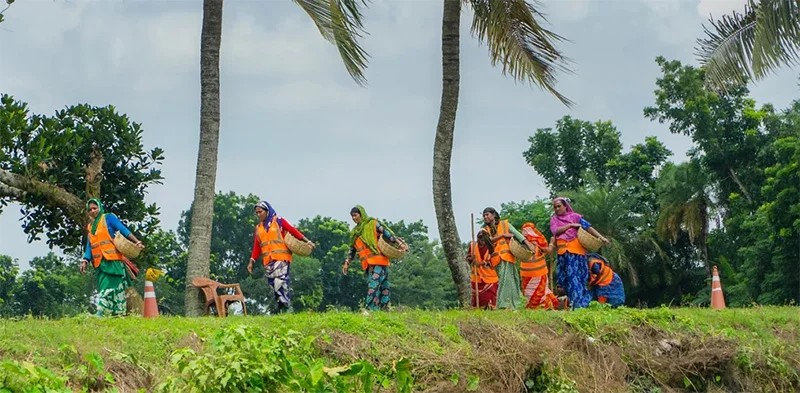
2024 was a year marked by political change across South Asia, with elections and political upheavals dominating the headlines in countries such as Bangladesh. Amidst this political backdrop, regional cooperation saw both progress and setbacks, according to a new report by the World Bank.
The report described regional connectivity and cooperation as a “marathon”—with some areas moving ahead swiftly while others progressed more slowly. However, the overarching trend was the growing recognition among South Asian countries that certain challenges, such as air pollution and climate change, require collective action.
One of the standout achievements of 2024 was the strengthened regional consensus on tackling air pollution. Countries in the Indo-Gangetic Plain and Himalayan Foothills—namely Bangladesh, Bhutan, Nepal, India, and Pakistan—have come together to combat air pollution as a cross-border issue. In June, the second Science Policy Dialogue on Air Quality Management in Bhutan reaffirmed the need for multisectoral and transboundary collaboration. These efforts are proving to be not only more cost-effective but also faster, delivering results at 45% lower costs compared to ad hoc measures. The group set an ambitious goal of reducing annual PM2.5 concentrations to less than 35 µg/m³ by 2035.
In addition to air pollution, there is growing momentum to tackle plastic pollution, particularly marine plastic. Regional efforts are also focused on innovation in plastic usage and production to reduce waste and pollution.
Addressing climate risks continues to be a priority, with increased regional cooperation in meteorological and hydrological services. The World Bank-supported South Asia Hydromet Forum has fostered collaboration across the region, enhancing consensus forecasting and early warning systems. This cooperation is already saving lives, with improved marine forecasting helping Sri Lanka’s fishing community prepare for extreme wave heights. This example highlights the effectiveness of collaboration in mitigating climate risks.
The report also spotlighted women’s increasing participation in regional development, particularly in traditionally male-dominated sectors like trade, transport, and infrastructure. Women’s inclusion in these sectors is vital to the region’s economic growth, and initiatives such as providing on-site childcare, access to separate restrooms, and well-lit spaces are helping to break down barriers. For example, women like Halima Begum in Bangladesh, employed in the construction and maintenance of regional transport corridors, and Runu Hazarika in Assam, who operates an inland water transport business, are exemplars of the region’s growing focus on gender inclusivity.
The WePower network, which supports women in the energy sector, also made significant strides in 2024, with 101 South Asian women engineers completing a leadership training program in the power sector.
A significant milestone in regional cooperation came in November 2024, when Nepal began exporting 40MW of hydroelectricity to Bangladesh via India’s grid. This historic power-sharing agreement marks the beginning of a broader energy trade between Nepal and Bangladesh, with future expansion expected. Additionally, Bhutan’s Druk Green Power Corporation signed an agreement with Tata Power in India to develop 5,000 MW of clean energy. These collaborations illustrate the critical role of private sector involvement in the clean energy transition.
The World Bank’s analysis predicts that South Asia’s energy demand will double by 2050, with emissions rising by 30%. However, the region could cut its emissions by up to 40% by leveraging cross-border electricity markets, renewable energy, and energy efficiency measures.
The South Asian Economics Students’ Meet (SAESM) marked its 20th anniversary in 2024, further emphasizing the importance of engaging the region’s youth in shaping the future of South Asia. The network brings together undergraduate economics students from across the region to foster academic exchange and strengthen regional ties. Over 90% of the SAESM alumni reported that the meet facilitated their first visit to a neighboring South Asian country, and more than 80% have maintained lasting relationships through the network.
With South Asia having the largest youth population globally, tapping into the collective energy and innovation of young people is seen as key to sustainable development and regional cooperation. These young voices are considered critical drivers of progress in the region, contributing to the vision of a unified #OneSouthAsia.
The report concludes by acknowledging that while significant progress has been made in 2024, much work remains to be done. The challenges and opportunities for collaboration will evolve, but the trajectory of regional cooperation remains positive. “This is not a sprint, but a marathon, with a long-term vision,” the report stated, reflecting the slow yet steady pace of progress that defines South Asia’s path to greater regional cooperation.
-

 Features6 days ago
Features6 days agoAKD faces challenging year ahead
-

 Editorial6 days ago
Editorial6 days agoA kiri-kekiri issue
-

 Sports6 days ago
Sports6 days agoSt. Sebastian’s dominate at Bambalapitiya
-

 Features5 days ago
Features5 days agoThey, too, had a ball …Down Under
-
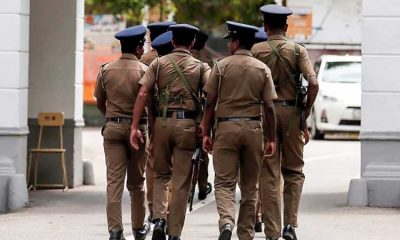
 News3 days ago
News3 days agoReshuffle of senior cops on the cards
-
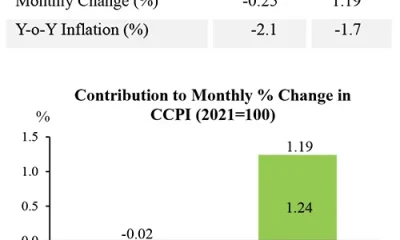
 Business5 days ago
Business5 days agoCCPI-based headline inflation continued to remain in negative territory in December 2024
-
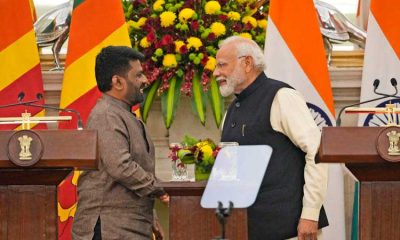
 Features4 days ago
Features4 days agoRating President’s visit to India
-

 Editorial5 days ago
Editorial5 days agoMessages and subtexts













